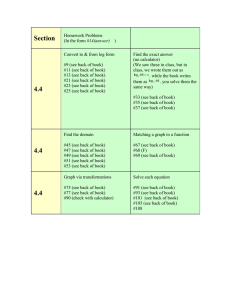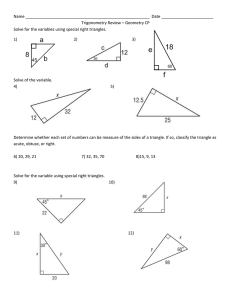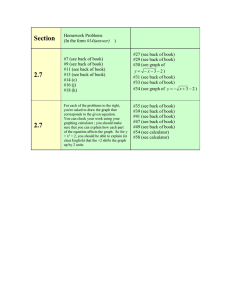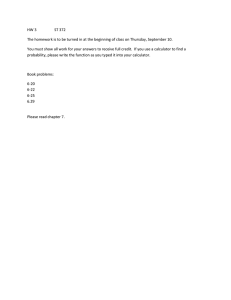similarity Students are taught trigonometric ratios in Math II and asked... set up equations that will allow them to find unknown...
advertisement
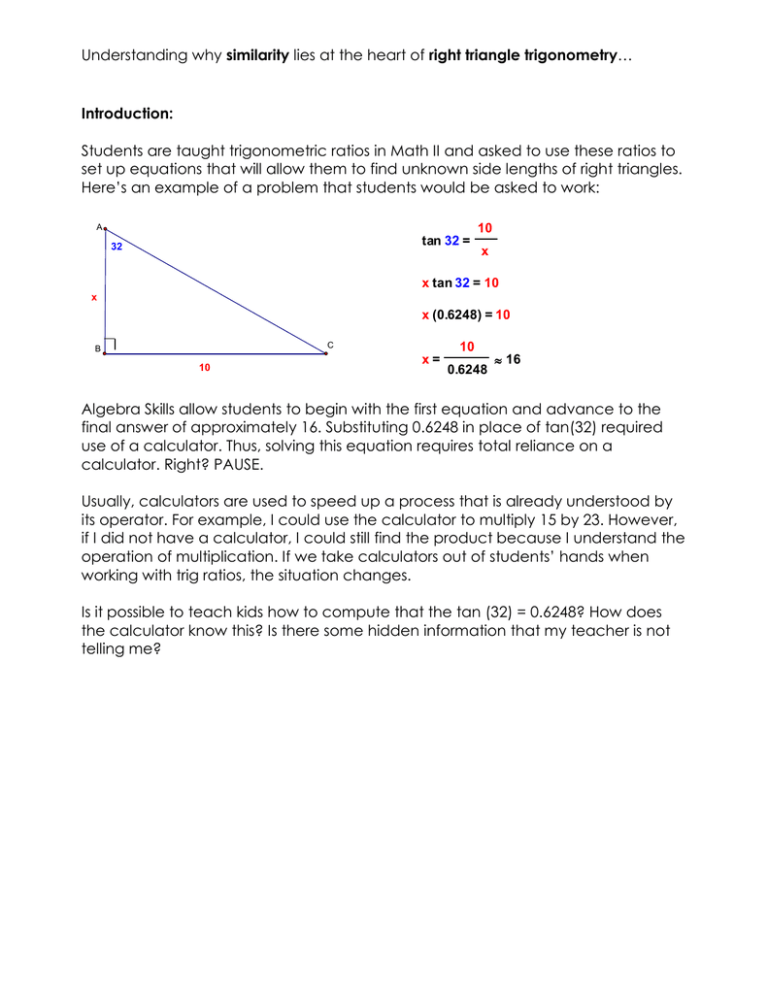
Understanding why similarity lies at the heart of right triangle trigonometry… Introduction: Students are taught trigonometric ratios in Math II and asked to use these ratios to set up equations that will allow them to find unknown side lengths of right triangles. Here’s an example of a problem that students would be asked to work: 10 A tan 32 = 32 x x tan 32 = 10 x x (0.6248) = 10 10 C B 10 x= 0.6248 16 Algebra Skills allow students to begin with the first equation and advance to the final answer of approximately 16. Substituting 0.6248 in place of tan(32) required use of a calculator. Thus, solving this equation requires total reliance on a calculator. Right? PAUSE. Usually, calculators are used to speed up a process that is already understood by its operator. For example, I could use the calculator to multiply 15 by 23. However, if I did not have a calculator, I could still find the product because I understand the operation of multiplication. If we take calculators out of students’ hands when working with trig ratios, the situation changes. Is it possible to teach kids how to compute that the tan (32) = 0.6248? How does the calculator know this? Is there some hidden information that my teacher is not telling me? Question Posed and Question Answered: Is it possible for students to calculate tan (32) = 0.6248? To begin, let’s dig into the brain of the calculator. When you press one of the trig ratio buttons on the calculator, the calculator then knows that we are working with a right triangle. You type... BRIAN of calculator: SIN COS invisions right triangle or TAN 3 2 It now knows the shape of the triangle. The triangle sum theorem allows it to fill in the third angle measurement. 58 32 32 The only thing that is unknown is the SIZE of the triangle. However, it doesn't matter!!! All triangles with the same shape are SIMILAR. Therefore, their side lengths are PROPORTIONAL. ENTER (=) The output value that the calculator gives is a RATIO. Thus, SIZE doesn't matter. The ratio will reduce to the same number in every case. So, we have established that the reason the calculator knows the value of the ratio because the calculator knows the shape of the triangle. Therefore, if students are able to construct a 32 – 58 – 90 right triangle (doesn’t matter the size), they too will be able to find the value of this ratio. Measure the side length opposite the 32- degree angle. Measure the side length adjacent to the 32-degree angle. Divide the numbers since the tangent ratio is opposite side divided by adjacent side. A sigh of Relief… Lucky for us, mathematicians many years ago devoted their lives to constructing all possible triangles and finding these ratios for us. The values that they came up with were organized into charts and this information is stored in the calculator. So, with a lot of time on one’s hands, it IS possible for students to find the value of tan (32). However, because of the lengthiness of this process, we rely of the charts stored in the calculators. However, it’s important to know that it’s not MAGIC. These numbers came from somewhere.


